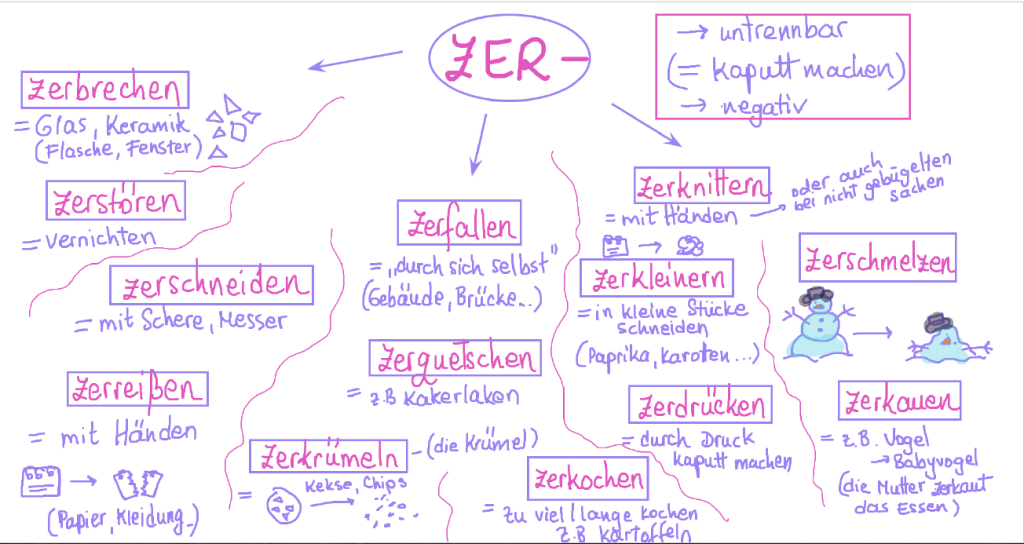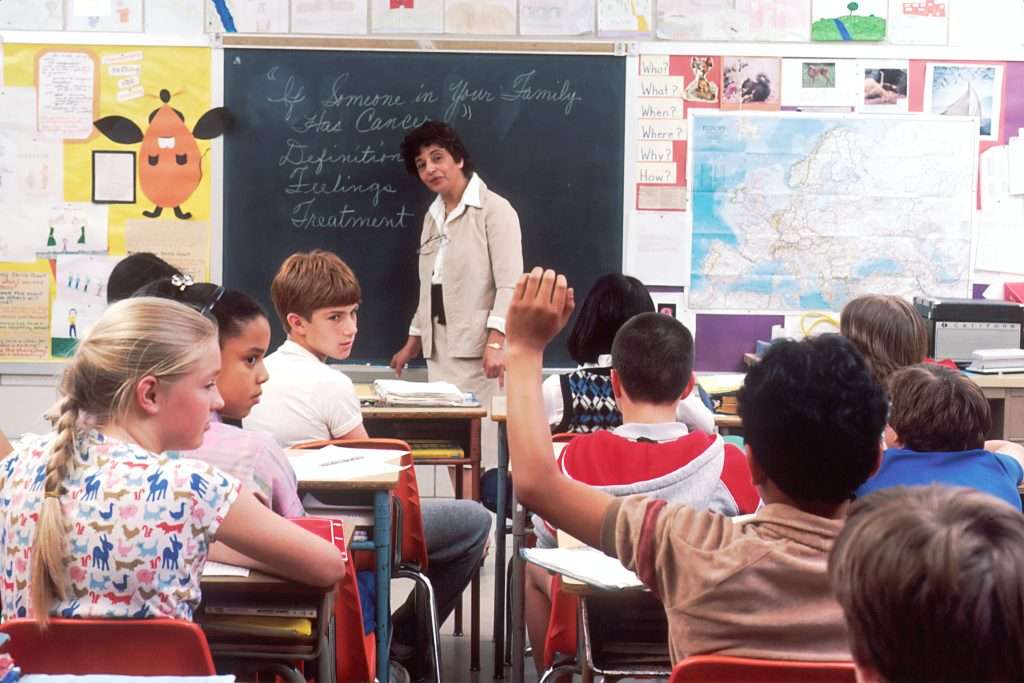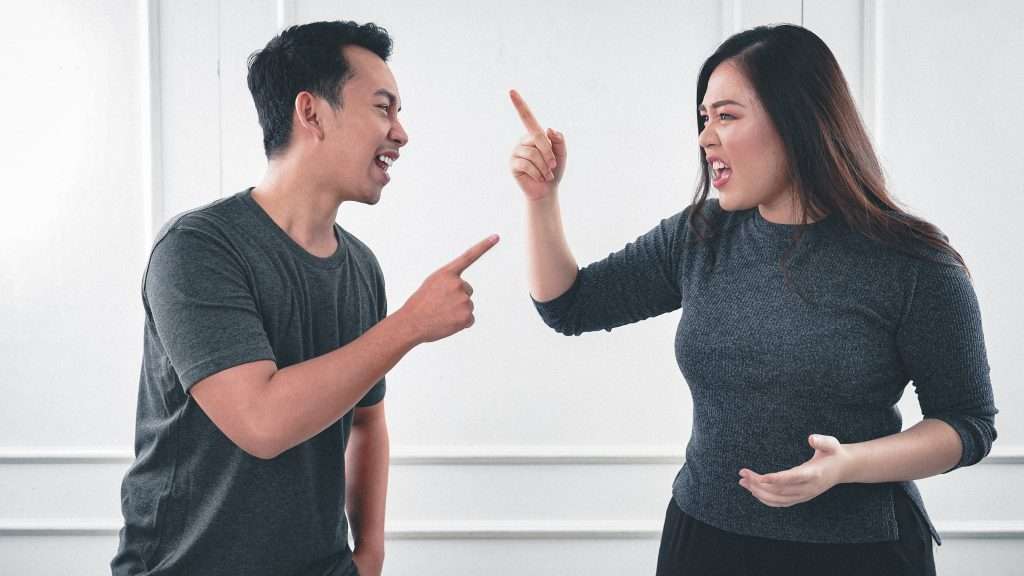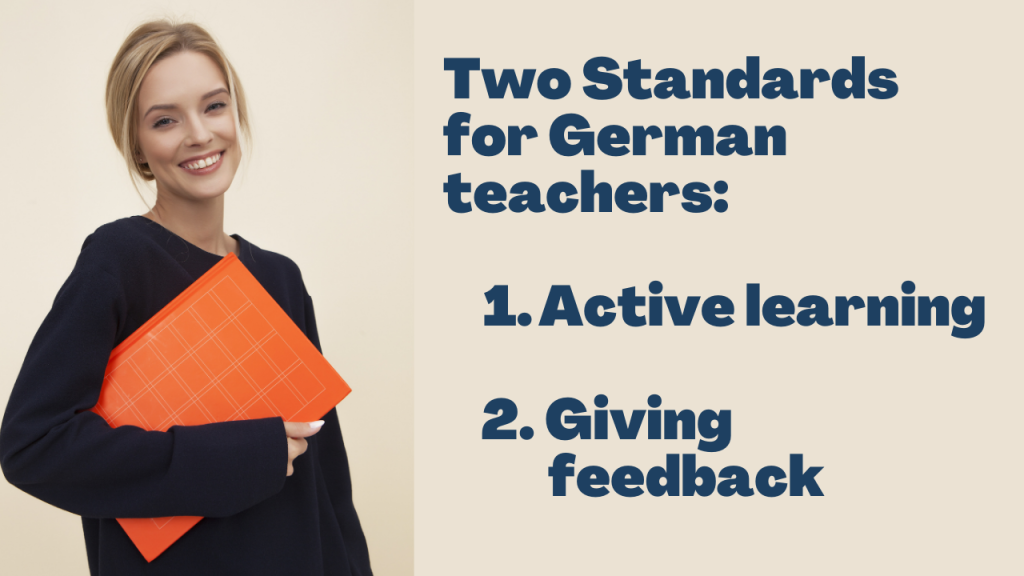
Overview
During the four months from April to July 2021, I attended two German language classes from two different teachers, from level B2 to C1.
The difference in their teaching styles made me realize what makes a good German teacher (or any language teacher, for that matter).
I’ve written my criteria for a good teacher at the end of this article, so if you’re short on time, feel free to skip to the end and read it!
If your time allows, then I suggest you read through both teachers’ teaching styles and make your own judgement first to see if we are in agreement.
Ms.S and Her Beautiful Notes

The first teacher, Ms. S, was our teacher for B2 level. She was bilingual and did most of the talking in class.
For each new unit, she would spent at least 45 minutes explaining the new vocabulary, meanings, and example sentences and then took another half an hour to 45 mintes to explain the new grammar rules.
Ms. S enjoyed writting new words, example sentences, and grammar explanations on the board by hand and she even drew sketches to help us understand. There was little interaction with the students during the lecture, and we just sat and listened in this phrase.
Ms. S had a “writing philosophy,” and she spent a considerable amount of time in class on writing by hand. She wrote the vocabulary and grammar rules on the board and even wrote out the answers word for word after we completed the exercises.

After the class, she made a PDF of the notes, including the words, grammar, and answers to the exercises, and sent them to us. So, at the end of each lesson, each of us would receive a colorful and illustrated copy of the notes.
In terms of speaking, we practiced from time to time.
Ms. S gave us a topic, and each of us was free to speak our own opinion. As Ms. S was more spontaneous in her teaching approach. There were no strict time limits, which meant that talkative students could occasionally monopolize the conversation for 20 to 30 minutes at a time.
After class, she gave us assignments that usually consisted of multiple-choice questions, filling in the blanks, matching words, and reorganizing sentences.
As for writing, I had two writing assignments during my two months of learning, one of which was revised and the other was without feedback.
The good thing about Ms. S was that she was kind, friendly, took good notes, explained things in detail, and her classes were quite comfortable and relaxed.
Ms. T and Her Questions

As we progressed to the C1 level, we had a new teacher, Ms. T.
Ms. T’s style was completely different from Ms. S’s relaxed and comfortable classroom atmosphere. We were more nervous and exhausted both during and after class.
When teaching vocabulary, Ms. T, unlike Ms. S, asked us to take turns explaining the meaning of the words, either by giving definitions or using example sentences. If we were wrong or our explanations were not comprehensive enough, she would explain them further.
When explaining grammar, Ms. T would write down the key points on the board while we were doing the exercises and then give a short explanation. After explaining, she would ask each of us to make example sentences using that grammar rule.
When doing listening and reading exercises, she often asked us why we chose a particular answer.

In addition, she would spot-check what we had learned in the past, including phrase collocations, word meanings, synonyms, antonyms, and more.
Ms. T’s assignments were much more difficult than Ms. S’s, and writing assignments became significantly more demanding.
We had weekly 2 to 3 writing assignments on average (Keep in mind that I had only 2 writing assignments in the whole 2 months with Ms. S! ). Along with the required topics, she would add additional requirements, such as using conjunctive sentences and several expressions learned that day.
On the next day, she would ask us to read our writings one by one, take notes as we read and then point out the mistakes we had made. For example, she has pointed out that I often confused “als, wenn” as I wrote.
If there was not enough time for giving feedback in our writings during the hour, Ms. T would correct our writing assignments with comments and send back the corrected essays within 1-2 days.
Ms. T’s notes were not as detailed as Ms. S’s, and most of the vocabulary was explained verbally. Some of my fellow students were not used to that and missed Ms. S and her beautiful notes and sketches.
Well, Who Is a Good German Teacher?

After reading the difference between the two teachers’ class styles, which one do you think would be more effective to learn from?
Most of the students in our class praised Ms. S, and some even expressed strong dissatisfaction with Ms. T.
But for me, Ms. T is definitely the better language teacher than Ms. S.
Here are my reasons.
Passive Learning Dominates Ms. S’s Class
One major issue in Ms. S’s class is that passive learning is heavily emphasized. Much of the class time is spent on listening to lectures, with little room for active participation.
While Ms. S’s notes may appear helpful, they are merely supplementary materials. Due to the lack of engagement and participation in class, retention of the material covered is minimal.
If you have prepared for an exam before, you would probably agree that taking notes and actively processing the information is much more beneficial for students than passively receiving notes from other people.
Additionally, the assignments provided by Ms. S are primarily passive in nature, such as multiple-choice, fill-in-the-blank, and linking exercises. Such tasks only require us to identify correct answers, rather than applying our newly acquired knowledge actively.
Compared to the writing and sentence-building assignments from Ms. T’s class, Ms. S’s tasks are less effective in consolidating and applying knowledge.
Time Wasting
Furthermore, a significant amount of class time is wasted on redundant activities and handwriting.
Ms. S prefers to manually write example sentences, answers to exercises, as well as new words instead of using programs like Word or PowerPoint.
For multiple choice and fill-in-the-blank questions, it is not necessary at all to spend such a great amount of time because these exercises are relatively simple and there are standard answers available.
Instead of having the teacher explain each one of them and write the answers by hand, it would be more efficient to let us check the answers ourselves and ask questions if we have any.
Lack of Feedback
Another critical issue is the absence of feedback from Ms. S.
If there are feedbacks from the teacher is a crucial distinction between taking a class and watching a recorded lesson.
With Ms. S’s teaching teaching, recorded lectures could be just as effective, as they, like Ms. S’s classes, offer little opportunity for interaction or feedback.
Actually, it might even be more advantageous to watch recorded videos in these sessions because at lease you can double the speed and replay as you watch a recorded lesson.
In her classroom, the only part that we were “allowed” to make some output and practice, Ms. S did not give us feedback after we finished speaking, but simply let us “free play”.
The “free play” approach is no different from a recorded class where the teacher assigns a topic and lets students pause the video and practice on their own.
A more effective way would involve allowing us to practice in class and providing us with constructive feedback to enhance their language skills.
A Summary

To summarize, I believe that language learning should not be too passive and comfortable. To improve language acquisition and retention, students need more engaging and active learning opportunities with constructive feedback.
Therefore, there are two important criteria for a good teacher.
- Whether the teacher provides opportunities for active learning (making sentences, writing essays, explaining).
- Whether the teacher provides the students with feedback during or after the lesson that is not available in a recorded video class.
If you want to learn a new language effectively, it is essential to have a teacher who encourages active learning and provides valuable feedback. These two criteria are crucial for making the most of your language learning experience.
So, if you have the opportunity to choose your own language teacher, make sure to look for someone who meets these standards.
And if you’re currently learning with a teacher who doesn’t meet these criteria, don’t be afraid to speak up and ask for more active learning opportunities and feedback.
Your language learning journey is too important to be left to chance!
Want to Read More?
- Here are my tips for taking online German courses more effectively, along with my recommended textbooks.
- If you are a German newbie, be sure not to miss this post on how to start your German learning journey!






